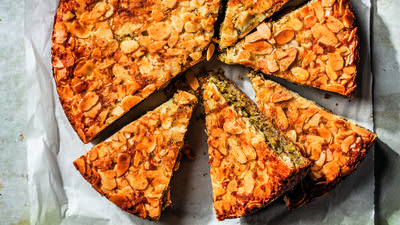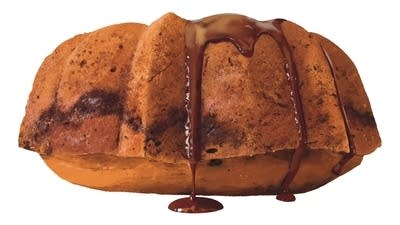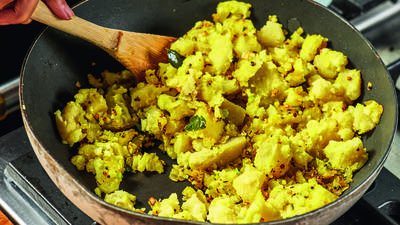 The Art of Fermentation
The Art of Fermentation
Yogurt is the most popular fermented milk in the world. It is distinctive for its thick and creamy semi-solid consistency, and its mildly tart flavor. The bacteria that ferment milk into yogurt are typically (there are exceptions) thermophilic bacteria, active at elevated temperatures. Therefore, to make nice thick yogurt you must incubate it, maintaining it in a temperature range between 110° and 115°F/43° and 46°C. Incubation strategies, the most challenging aspect of making yogurt (and some other ferments), are covered in chapter 3.
To make yogurt, you need a starter culture. If you can find or buy a traditional yogurt culture, and are good at maintaining a regular rhythm, you may be able to make yogurt from it for the rest of your life. If you want to try making yogurt without delay, you can use commercial yogurt for the starter, always live-culture, plain, and without additives. (A lengthier discussion of yogurt starters follows this description of how to make it.) The first step of the yogurt-making process is to remove your starter yogurt from the refrigerator and allow it time to warm to room temperature. Also, fill the jars in which you will make the yogurt, as well as your incubator if you are using an insulated cooler, with warm water, so they can pre-warm and will not later cool your yogurt mixture once it reaches target temperature.
As the starter and vessels warm, I heat the milk to at least 180°F/82°C. Heat milk slowly and gently, with frequent stirring to avoid scalding. "The faster you heat the milk, the more grainy bits of overheated congealed protein you'll find in your yogurt," warns Rosanna Nafzifer, co-author (with Ken Albala) of the excellent Lost Art of Real Cooking. It is possible to omit this heating step and make raw yogurt, never heating the milk above 115°F/46°C. But raw yogurt will never be as thick as yogurt from milk that has been heat-treated.
What this heating accomplishes, aside from killing native bacteria that could compete with the introduced cultures, is to alter the structure of the milk protein, casein, a key to thick, firm yogurt. Holding the milk at this high temperature, with constant stirring, will result in evaporation and concentration of milk, further contributing to a thicker end product. It is in simulation of this traditional evaporation step that many yogurt manufacturers and people making it at home add powdered milk or other thickening additives.
After heating the milk, you must allow it to cool before adding the starter culture. You may simply leave the pot of heated milk to slowly cool, monitoring it periodically so you can add cultures as soon as the temperature drops to 115°F/46°C. Or you can actively cool it, by filling a sink, tub, pot, or bowl with cold water and setting the pot of heated milk in the cold water. Stir the milk in the pot, as well as the water around it, for rapid cooling. Don't wait for the temperature to reach target before removing the pot of milk from the cold water, or it will cool further; remove it from the cooling bath as the temperature approaches 120F/49C. Once the temperature reaches 115°F/46°C, remove a cup of the milk into a cup or bowl, and stir in starter. I use 1 tablespoon of starter per quart/liter. Many recipes suggest using more starter, and in my early yogurt-making experiences I did, but based on the recommendation of The Joy of Cooking I tried a "less is more" approach and found that it made thicker yogurt. A tablespoon is just under 5 percent of a quart or liter. A dairy production reference book I consulted recommended using yogurt starter at a proportion of 2 to 5 percent, so you could use even less.12 Thoroughly mix the starter with the cup of heated milk; once it is fully dissolved, mix it back into the full pot of heated milk. Then transfer cultured milk to preheated jars, seal, and place in the incubation chamber, leaving it to ferment undisturbed.
Incubated at 115°F/46°C, yogurt will coagulate within about three hours, but if left too long it can easily curdle. I prefer to ferment it a bit more slowly at a slightly lower temperature, four to eight hours at a more forgiving 110°F/43°C. Even longer fermentations can yield more tangy flavor and fuller digestion of lactose. I have heard of people fermenting yogurt for as long as 24 hours. At lower temperatures, coagulation will take longer, and the end result will probably not be quite as thick. If you should open your incubator and find your yogurt still runny, add hot-water bottles to heat it up, and leave it for a few more hours at warmer temperatures. If for some reason your yogurt fails to coagulate at all, which can happen, you do not need to discard the milk; you can easily turn it into a simple acid-curdled cheese.
Sources of Heirloom Yogurt Cultures
Yogurt Resources
Yogurt Everyday: How to make yogurt, recipes, links, and more from a yogurt lover named Jenna.
Yogurt Forever: The Yogurt Encyclopaedia by Roberto Flora, translated by Fiammetta Cestaro.
Before you go...
Each week, The Splendid Table brings you stories that expand your world view, inspire you to try something new, and show how food connects us all. We rely on your generous support. For as little as $5 a month, you can have a lasting impact on The Splendid Table. And, when you donate, you’ll join a community of like-minded individuals who love good food, good conversation, and kitchen companionship. Show your love for The Splendid Table with a gift today.
Thank you for your support.
Donate today for as little as $5.00 a month. Your gift only takes a few minutes and has a lasting impact on The Splendid Table and you'll be welcomed into The Splendid Table Co-op.




